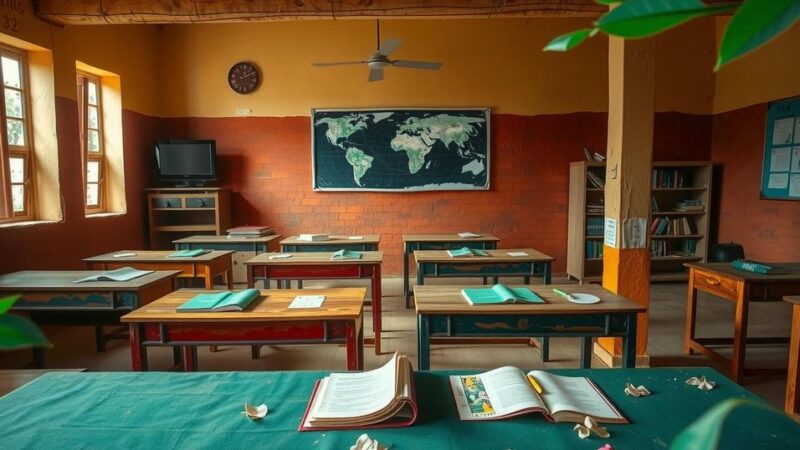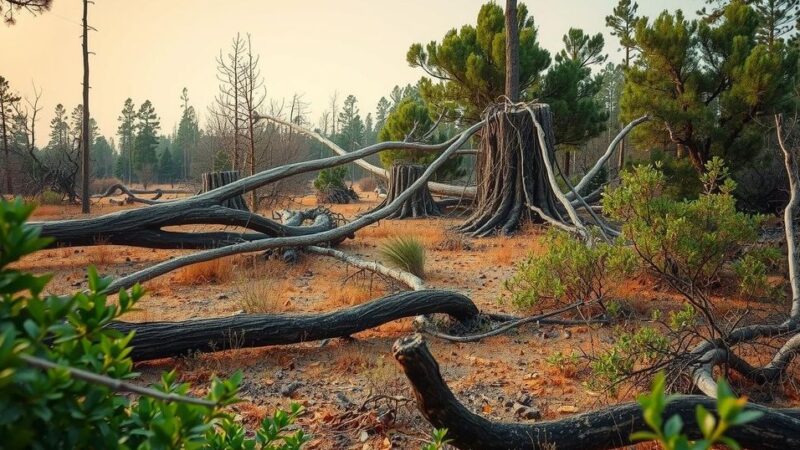Bolivian farmers must decide between burning land for crops or planting trees to combat extreme droughts exacerbated by climate change. Last year, unprecedented wildfires devastated over 10 million hectares of forest, leading to loss of lives and serious environmental consequences. Farmers like Julia Ortiz and Carmen Pena highlight the difficult circumstances they face, but innovative tree-planting initiatives are being developed as a potential solution to restore ecosystems and secure livelihoods.
Farmers in Bolivia face a significant dilemma: they must choose between continuing the practice of burning land for agriculture or adopting tree planting initiatives to combat escalating droughts. In the eastern lowlands, approximately 10.7 million hectares of dry tropical forest were devastated by wildfires last year, as reported by the Bolivian Institute for Forest Research (IBIF). These fires, attributed largely to climate change and poorly managed agricultural practices, resulted in severe environmental damage and at least four fatalities, highlighting their disastrous impact.
Julia Ortiz, a sesame farmer, shares her experiences with slash-and-burn agriculture, a method essential for many farmers in the Chiquitania region. She recalls a harrowing night spent controlling a fire they had ignited. Despite the risks involved, Ortiz emphasizes that burning remains the only feasible method available due to lack of access to machinery needed to clear land effectively.
Carmen Pena from Santa Ana de Velasco illustrates the devastating consequences of these wildfires, having lost her banana and yuca crops. With a majority of residents reliant on agriculture, the fear of food scarcity looms large as they struggle to sustain livelihoods. Meanwhile, new fires are being set for land clearance, despite efforts to initiate reforestation projects to repair the damage caused.
The local community is facing increasing pressure to expand farmland, with IBIF stating that a considerable portion of last year’s fire damage occurred in forested areas. David Cruz, a climate specialist, critiques the government for enabling deforestation by granting leniency to those responsible for setting fires and delaying environmental compliance deadlines.
In response to ongoing drought conditions, local women, alongside male volunteers who have migrated for work, are employing innovative tree-planting techniques from Nepal. They create biodegradable “bombitas” containing indigenous tree seeds, which will be spread over 500 hectares of deforested land using drones, with plans to drop around 250,000 units starting in March.
Joaquin Sorioco, a local farmer and forestry technician, emphasizes the critical link between forests and water availability. The Flades foundation, which supports reforestation initiatives, views the recent wildfire crisis as a catalyst for heightened environmental awareness among the community. Mario Rivera, the foundation’s director, acknowledges that these events may have raised consciousness regarding the dangers of existing land-clearing practices.
In conclusion, Bolivian farmers are caught in a critical choice between unsustainable agricultural practices, such as slash-and-burn, and the adoption of reforestation efforts necessary to address the worsening climate crisis. The devastation caused by last year’s fires serves as a clarion call for change, urging a shift towards sustainable land management. Collaborative community efforts to plant trees could foster resilience against the adverse effects of ongoing droughts, while also protecting vital ecosystems.
Original Source: www.france24.com






